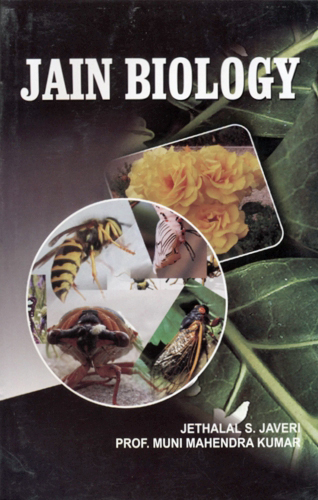The title of the thirty-sixth chapter of Uttarādhyayana is "The Living organisms and Inanimate Things". The first 47 verses deal with the inanimate objects. The subject of living organisms is dealt with in vv. 48 to 246 as under:
Subject [Verse No.]- Siddhātmās—Pure and Perfect souls [50 to 68]
- Saṃsārī or Mundane Beings [69 to 246]
- Three types of Immobile organisms [71 to l06]
- Earth-bodied organisms [ 71 to 84]
- Water-bodied organisms [85 to 92]
- Plants—Vegetables [93 to 106]
- Three types of Mobile (trasa) being [108 to 246]
- Fire-bodied organism [109 to 117]
- Air-Bodied organisms [118 to 126]
- Organisms with organic bodies [127 to 246]
- with two sense-organs [128 to 136]
- with three sense-organs [137 to 145]
- with four sense-organs [146 to 155]
- with five sense-organs [156 to 246]
- Denizens of hell [157 to 170]
- Sub-human animals [171 to 193]
- Aquatic animals [171 to 178]
- Terrestrial animals [179 to 186]
- Air-borne (birds) [187to 193]
- Human beings [194 to 202]
- Gods [203 to 246]
- Bhavanapati (Mansion-dwelling gods) [205 & 218]
- Vyantara (Forest gods) [206 & 219]
- Jyotiṣka (Luminous gods) [207 & 220]
- Vaimānika (Empyrean gods) [208,221-246]
- Kalpa (gods subjected to law or custom) [209-10,221-232]
- Kalpātita (gods not subjected to any law or custom) [211]
- Graiveka (Neck-dwelling) [212-13,233-241]
- Anuttara (gods of the highest heaven) [214-17,242-243]
- Three types of Immobile organisms [71 to l06]
It can be seen from the synopsis of both Prajñāpanā as well Uttarādhyayana that the authors have adopted the sequence of ascending order of the development of consciousness, i.e., they start with the organisms which possess the minimum consciousness, viz., the earth-bodied organisms and ends with the highest level of devas (gods) This is quite different from the third scripture as we shall presently see.
 Jethalal S. Zaveri
Jethalal S. Zaveri
 Prof. Muni Mahendra Kumar
Prof. Muni Mahendra Kumar

